Sketch-bridging the Past and Present to Craft the Future: Reflecting on the Archaeologies and Heritages of Roman Scotland Through Creative Storytelling
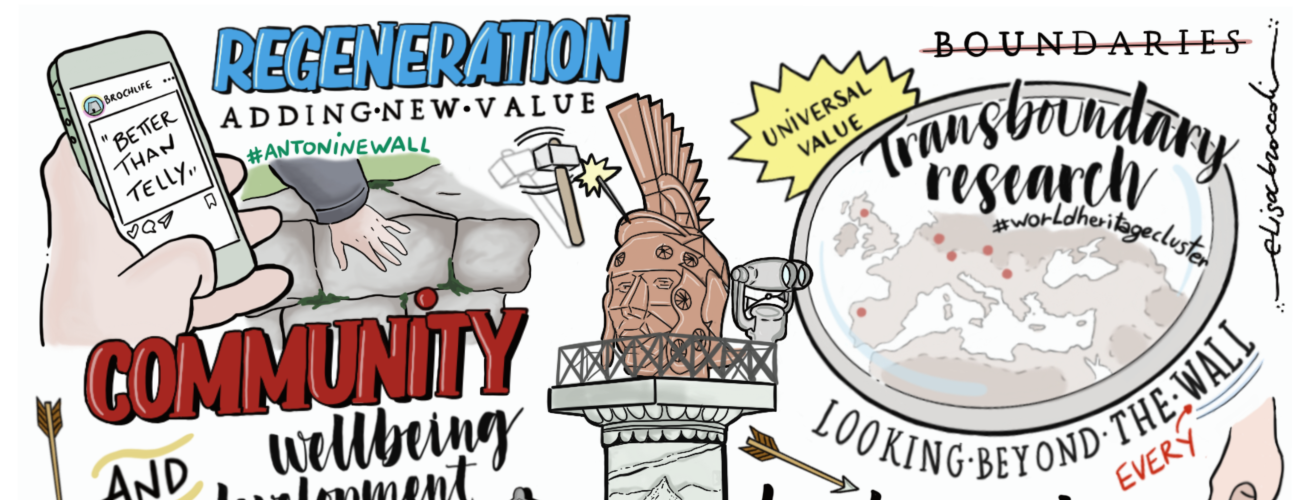
1. Introduction
Taking Archaeology out of Heritage is the title of the seminal work by Emma Waterton and Laurajane Smith (2009) that constitutes one of the foundations of critical heritage studies. However, just as "Archaeology needed to be removed from Heritage in order for Heritage to grow [...] Heritage should now return to Archaeology in order for Archaeology to further develop and decolonize" (Santikarn et al. 2022: 4). This thought-provoking statement serves as a fundamental premise for understanding the artwork presented here and the creative process behind it. The authors argue that it is necessary to rethink the evolving dynamic between Archaeology and Heritage to re-assess a frequently perceived divide between the two. Today, this division becomes visible whenever heritage and archaeology professionals adopt siloed approaches to the generation of knowledge about the past and its contemporary relevance (see, for example, the debate in the Antiquity journal between González-Ruibal et al. 2018; Harrison 2018; Smith and Campbell 2018; cf. also Perry 2018 for a summary about interpretation discourse in both disciplines).
It is not uncommon for interpretation experts to start developing public explanations and communications of the past once archaeologists have completed their data processing and research (Perry 2018; Santikarn et al. 2022). Conversely, the realm of heritage interpretation can sometimes be characterized as a structured, frequently bureaucratic system of practices performed by property managers, curators, educators, and specialists (Perry 2018; Staiff 2014). As a result of this situation, the dialogue between 'popular' narratives and academic ones is not always as extensive and rich as one would wish it to be. We may ask, therefore, what archaeological knowledge is conveyed from the "trowel's edge" to the exhibition and museum? (Perry 2018). And whose perspectives of the past are mobilized in the present, and how? Despite the different theories and methodologies that sometimes inform their work, both archaeology and heritage possess the potential to offer valuable perspectives for critically examining the "important issues that an engagement with the past brings up" in society (Holtorf 2010: 384). Therefore, both should be actively engaged in the "creation, interpretation, recovery, and continued use of heritage" (Santikarn et al. 2022: 8).
The aim of this article is to apply and reflect upon a responsive methodology to better connect interpretation processes that are typically considered as falling within either archaeology or heritage. In 2020, the authors were awarded a Research Workshops grant from the Royal Society of Edinburgh (RSE), for the project Narratives of Roman Scotland in the Digital Age. The project, which was developed in 2021–2022, brought together archaeologists, heritage practitioners, and local community organizations to discuss current research on the Roman presence in Scotland and its contemporary legacies. This seemed an ideal opportunity for interrogating how knowledge of the Roman past is produced within archaeological research in Scotland, and how such information impacts and is impacted by the lives of the communities who reside, work, and play in these places (Figure 1).
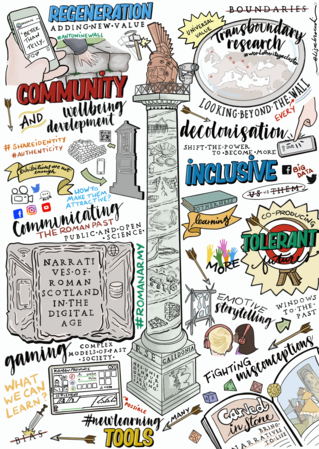
Figure 1. Artwork completed by Elisa Broccoli for the project Narratives of Roman Scotland in the Digital Age. A larger-resolution version of the image is available here; 3.5 mb.
2. The project
Recent research is leading to a new understanding of the Roman presence in northern Britain and in other frontier regions of the Empire, as well as the impact of Rome on Iron Age communities (Fernández-Götz et al. 2022; Reid 2023). Advances in Scotland include the discovery and investigation of Roman military installations (Hodgson 2009; Jones 2011), the compilation of an online Atlas of all Iron Age hillforts (Lock and Ralston 2022), the study of Roman objects in Iron Age contexts (e.g. Hunter et al. 2022; Ingemark 2014), the identification of pigments on Roman sculpture (Campbell 2020), and new analyses of the building and architecture of the Antonine Wall (e.g. Graafstal et al. 2015; Romankiewicz et al. 2022). There is also growing research on present-day experiences and values of the Iron Age and Roman past in Scotland and beyond (Bonacchi 2022; Bonacchi et al. 2018; Economou et al. 2018; Hingley et al. 2018). In addition, numerous community engagement initiatives are helping to raise awareness of public uses of the past and contribute to individual and group wellbeing in a variety of ways. For example, the Rediscovering the Antonine Wall project was co-developed with local communities along the wall to deliver tangible benefits to them through creative responses to their local Roman heritage (Jones 2021; McMorrow forthcoming; Weeks 2020).
However, as mentioned above, when presenting and disseminating the results of their work, specialists in Roman and Iron Age archaeology and professionals in heritage frequently operate in different networks. Therefore, our project brought together some of these professionals in the same [virtual] rooms to consider the latest research diachronically and in a cross-disciplinary manner. In this way, it was possible to explore opportunities for cross-pollination of research processes and outcomes, knowledge exchange with wider audiences, and discussion about the contribution of Scotland's Roman heritage to wellbeing and sustainable community development. Several events were organized as part of the project's activities:
- a participatory colloquium entitled Using Roman Heritage for Enhancing Public Wellbeing (May 2021), which involved representatives from local communities;
- four workshops (October 2021) that included archaeologists, heritage specialists, and members from community based-organizations: New Research on Iron Age and Roman Scotland; Contemporary Legacies and Digital Interactions; How Can Scotland's Iron Age and Roman Heritage Contribute to Wellbeing and Sustainable Community Development?; and Communicating the Roman Past: International Perspectives.
- filming sessions with archaeologists and heritage practitioners at selected locations in Scotland (museums and archaeological sites, March 2022).
The lead author of this article created artwork to connect the new, interdisciplinary, and cross-sector knowledge generated by these encounters through a digital storytelling approach. The aim was to inform a more inclusive interpretation and management of Iron Age and Roman heritage places.
3. Methodology
Within archaeology and heritage, storytelling is useful not only for conveying intricate concepts to public audiences, but also as a powerful tool for reflection, interpretation, and knowledge production. Storytelling is "a mode of exploration and a kind of model-making that allows us to create comparative frameworks for evaluating different theories" (Holtorf 2010: 382; see also Bernbeck 2013; Terrel 1990). The creative process inherent in narrative construction leads to the recognition of knowledge gaps, fostering a more profound understanding of data and yielding better insights into various facets of research (Perry 2018; Rosseau et al. 2015). Storytelling is by no means a novelty in archaeology and heritage practice; over twenty years ago Pluciennik (1999) initiated a comprehensive discussion of storytelling's roles and potential in archaeology. However, this practice has been applied mainly to the communication of the contemporary relevance and meanings of the past – or heritage (Bedford 2001; Palombini 2017; Vrettakis et al. 2019). To this day, it has rarely been used to bridge the boundaries between archaeology and heritage knowledge production or for explicitly fostering collaborative critical thinking.
We tailored storytelling to align with the project's aims and requirements. Both affected and partially inspired by the Covid-19 pandemic, the project team embraced the importance of leveraging the potential of digital solutions to communicate imaginatively and interact in new ways. Thus, we organized online events encompassing over 30 papers that were livestreamed and recorded, and which are now freely accessible as a digital playlist on the YouTube channel of Historic Environment Scotland. The Live-illustration technique (https://liveillustration.co.uk), based on sketch-noting (Dimeo 2016; Fernández-Fontecha 2019; Paepcke-Hjeltness and Lu 2020), seemed a convincing and creative method for capturing ideas, concepts, and insights from these meetings and, subsequently, for crafting a unique narrative that can meaningfully unfold through a single digital artwork. The latter was made public, free of cost through its release under a Creative Commons Attribution (CC-BY) license.
Typically, a live illustrator stands in front of the audience capturing conversations and turning words into comic-like and engaging hand drawings. This practice helps to keep the audience focused and to foster discussion during the event. Moreover, once the event has ended, the artwork helps to facilitate retrospection on the topics discussed, and on the interactions, brainstorming, and argumentation that culminated in the consolidation of specific conclusions.
However, the onset of the Covid-19 pandemic required a shift from in-person public events to online ones, as noted earlier. In this context, the live illustrator became what may be aptly termed a 'digital scribe'. Some artists continued their established practices, sharing their tablet screens during online meetings and conferences. Others decided to create their artworks based on video-recordings of an event – a choice that provided them with additional time not only for transcribing but also for reflecting on and reinterpreting the participants' contributions. This second approach was more suitable for our project, helping to harmonize the diverse conversations arising from the colloquium and four separate workshops and to synthesize them into a coherent narrative.
The lead author acted as a digital scribe, participating in all online events organized by the project team. Using both text and visual elements, she graphically recorded the key concepts articulated by the speakers as well as any audience responses offered during Q&A sessions. These initial drawings were used as the starting point for the creation of the final illustration, which combined written and visual 'notes' into a digital illustration. The artwork was displayed at the Limes Congress in Nijmegen in August 2022 and printed copies of the poster were given to award winners at the Congress' closing ceremony (Breeze et al. forthcoming).
4. The creative process
The creative journey started with a fundamental challenge: finding a graphic solution capable of expressing two distinct dimensions effectively, "the past" – the interpretations emerging from archaeological research – and "the present" – the contemporary perceptions and uses of these narratives (Figure 2).
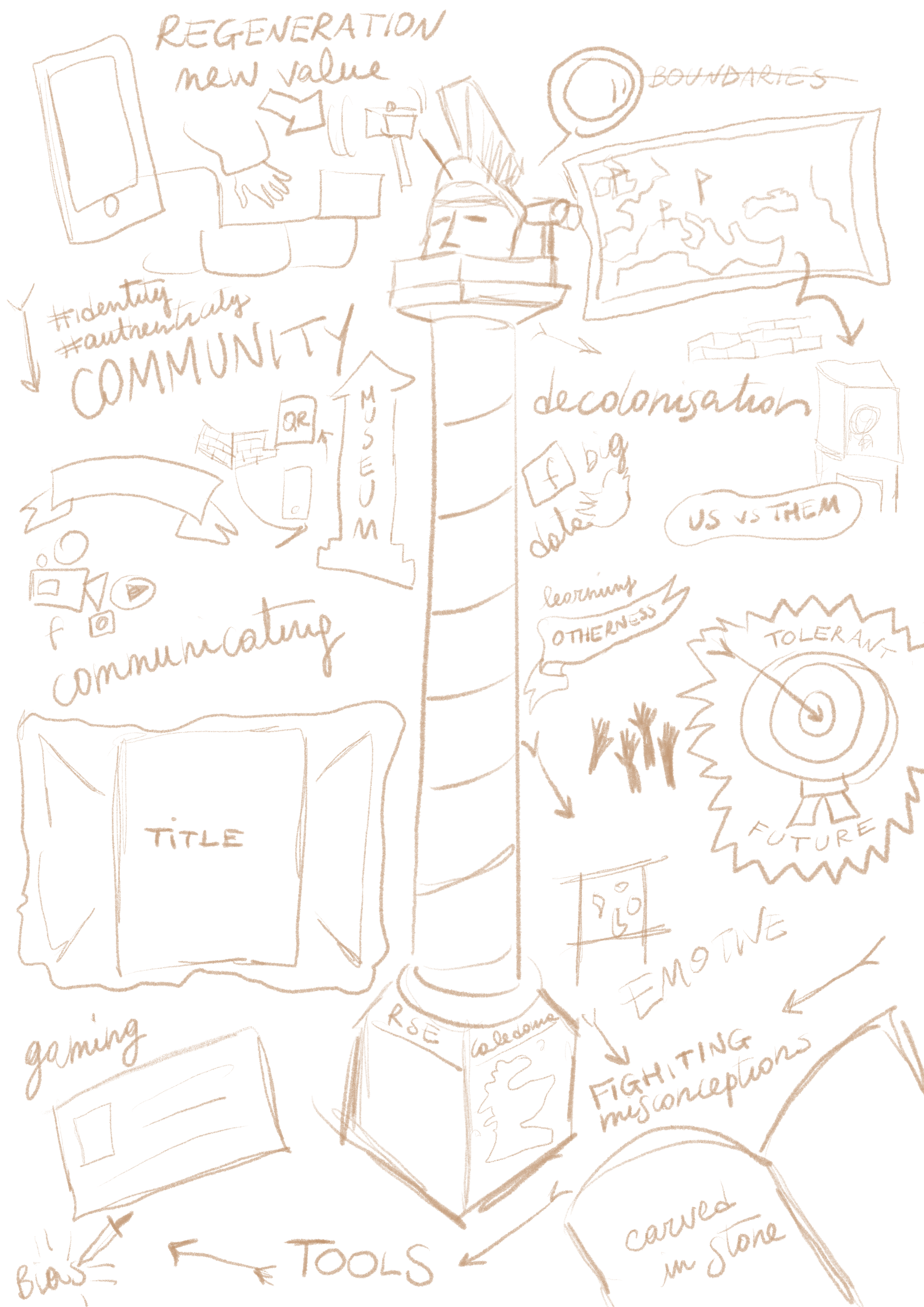
Figure 2. First draft of the artwork. Full sized image is available here.
The digital scribe chose the famous Trajan's Column to evoke a sense of the Roman world. This well-known monument was ideal to communicate with a wide audience, being one of the most popular and visible elements of the built environment associated with ancient Rome whilst also representing military conquest, relevant to the remains of Rome in Scotland. The drawing process commenced with an initial sketch of the central element resembling Trajan's Column, subsequently enriched with key archaeological research topics presented during the events. These were 'wrapped' around the column's shaft, replicating the way in which the artwork was added to the column originally, from contemporary war commentaries and potentially also an artist's wartime sketchbook (Lepper and Frere 1988; Richmond 1982). The column was refined to exude a distinct "Roman-Scottish character," thanks to the addition of the Nethercroy Roman head sculpture – a newly created artwork situated on the Antonine Wall in 2020 and mentioned during the colloquia – and of a map of contemporary Scotland on the plinth. Additionally, the project's title was visually transformed into a Roman-Scottish inscription, inspired by the lost Antonine Wall distance stone from Hutcheson Hill. The colour palette emphasized a subdued, pale shade reminiscent of classical antiquity, which also imparted a sense of detachment in contrast to the bright and striking background ( Figure 3 ).
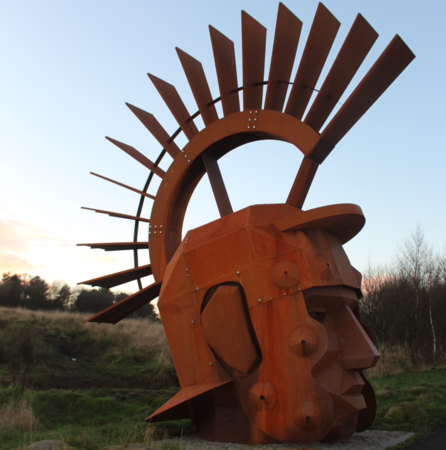
Figure 3. Nethercroy Roman head sculpture on the Antonine Wall, photographed by Rebecca Jones.
From a creative perspective, the column not only served as the foundational element of the illustration, but also symbolized the metaphorical initiation of the process of interpreting the past, starting with archaeological work on its material traces. Binoculars, common among tourists visiting monuments and sites, were placed on the top of the column to symbolize an 'extended gaze'. In this sense, the binoculars point to the transboundary nature of research on the Roman world (Jones 2021). They also invite viewers to look beyond the figurative wall, signifying a shift from the material sphere to the immaterial and, concurrently, a move from "the past" to "the present". This transition continues on the right-hand side of the artwork. Here, the digital scribe introduced topical heritage concepts, such as decolonization and inclusivity, that had emerged from the discussions (cf. also Kamash 2021). An enduring theme within the discourse on Scotland's Roman heritage focused on the role of archaeology in understanding "otherness" in the past (Hingley et al. 2018). This, in turn, laid the foundation for the co-production of tolerant futures through Iron Age and Roman identities, a concept proposed by Bonacchi and colleagues (2022). This concept served as a unifying narrative, visually represented as a target. Arrows alongside all the elements within the column's background symbolized the various experiences and means employed in Scotland to produce and disseminate archaeological knowledge about the Roman past. Such arrows exemplified the collective will and the opportunity to converge towards a shared objective: a multi-faceted and inclusive exploration of past others that informs similarly accepting and respectful ideas of present others ( Figure 4 ).
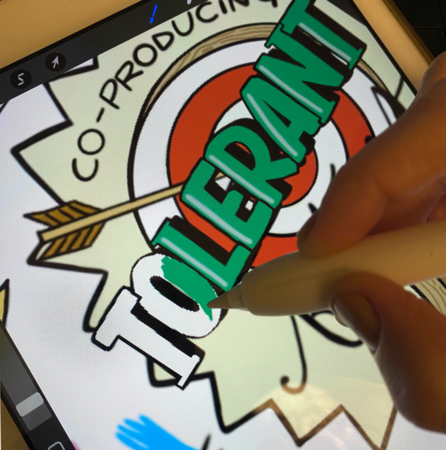
Figure 4. Colouring Process
This central narrative continues with illustrated blocks that detail tools and approaches to achieve tolerant futures, by referencing specific projects presented during the events. This section illuminated ongoing experiments and potential opportunities, including innovative educational tools like gaming (Rubio-Campillo 2020; Tyrrell et al. 2021). Overall, the use of digital technologies and creativity played a vital role in this context and in the communication of the past, the final block of this illustrated journey. Decolonizing archaeological narratives can only be achieved by engaging communities and societies at large; their viewpoints can regenerate and add new value to archaeological interpretation, represented as a chisel and hammer diligently working on the Nethercroy Roman head sculpture atop the column.
5. Conclusion
Narratives of Roman Scotland in the Digital Age emerged from the desire to advocate for interpretations of the past and its contemporary relevance that transcend current disciplinary boundaries. The project facilitated the coming together of archaeologists, heritage professionals, and community-based volunteers within an online space that enabled exchanges of experiences attesting the enduring legacies of the Roman past in present-day Scotland and beyond. The team embarked on a creative journey to forge a comprehensive and valuable method and resource that promotes critical reflection on the use of archaeological knowledge and its active role in shaping heritage practices to address societal issues, while also exploring the place of heritage within archaeological interpretations of the past. Sketch-noting has proved to be a useful storytelling approach, capable of satisfying the dual imperatives of documenting existing knowledge while simultaneously mediating future interpretative horizons, through the crafting of decolonizing and inclusive narratives about the Roman world in the past and present. The resulting digital artwork stands as a tangible testament to this potential.
Acknowledgements
This paper and the project on which it is based have been developed with the support of a grant from the Royal Society of Edinburgh (Awardee ID: 69284). We would also like to thank all the participants in the project's activities, as well as Mike Elliot and Laura Mackenzie for logistical support with the colloquium and workshops; Doug Rocks-Macqueen for recording videos with experts; Chris Purcell and Tim Penn for the transcription of the text of the papers for YouTube; and Olivia Warren for creating and curating the project's website.
References
Bedford, L. 2001. Storytelling: The Real Work of Museums. Curator: The Museum Journal 44: 27-34. DOI: 10.1111/j.2151-6952.2001.tb00027.x.
Bernbeck, R. 2013. In Defense of „the New": a Response to Dawid Kobiałka. Forum Kritische Archäologie 2: 23-28. DOI: 10.6105/journal.fka.2013.2.3.
Bonacchi, C. 2022. Heritage and Nationalism. London: UCL Press. DOI:10.14324/111.9781787358010.
Bonacchi, C., Altaweel, M. and Krzyzanska, M. 2018. The heritage of Brexit: Roles of the past in the construction of political identities through social media. Journal of Social Archaeology 18: 174–192. DOI:10.1177/1469605318759713.
Bonacchi, C., Hingley R. and Sharpe, K. 2022. Tolerant Futures Project [online]. Available at: https://www.tolerantfutures.com/about. Accessed October 28, 2023.
Breeze, D.J., Ivleva, T., Jones, R.H. and Thiel, A. (forthcoming) A History of the Congress of Roman Frontier Studies, 2nd edition. Oxford: Archaeopress.
Campbell, L. 2020. Polychromy on the Antonine Wall Distance sculptures: non-destructive identification of pigments on Roman reliefs. Britannia 51: 175-201. DOI:10.1017/S0068113X20000124
Dimeo, R. 2016. Sketchnoting: an analog skill in the digital age. ACM SIGCAS Computers and Societies 46/3 (November 2016): 9–16. DOI:10.1145/3024949.3024951.
Economou, M., Young, H. and Sosnowska,E. 2018. Evaluating emotional engagement in digital stories for interpreting the past. The case of the Hunterian Museum's Antonine Wall EMOTIVE experiences. 2018 3rd Digital Heritage International Congress (DigitalHERITAGE) held jointly with 2018 24th International Conference on Virtual Systems & Multimedia (VSMM 2018), San Francisco, CA, USA, 2018: 1-8. DOI: 10.1109/DigitalHeritage.2018.8810043.
Fernández-Fontecha, A., O'Halloran, K. L., Tan, S. and Wignell, P. 2019. A multimodal approach to visual thinking: the scientific sketchnote. Visual Communication 18/1: 5-29. DOI:10.1177/1470357218759808.
Fernández-Götz, M., Cowley, D., Hamilton, D., Hardwick, I.J. and McDonald, S. 2022. Beyond Walls: Reassessing Iron Age and Roman Encounters in Northern Britain. Antiquity 96(388): 1021 - 1029. DOI:10.15184/aqy.2022.47.
González-Ruibal, A., González, P.A. and Criado-Boado, F. 2018. Against reactionary populism: towards a new public archaeology. Antiquity 92: 507–515. DOI:10.15184/aqy.2017.227.
Harrison, R. 2018. Critical heritage studies beyond epistemic popularism. Antiquity 92, E9. DOI:10.15184/aqy.2018.223.
Hingley, R., Bonacchi, C. and Sharpe, K. 2018. 'Are You Local?' Indigenous Iron Age and Mobile Roman and Post-Roman Populations: Then, Now and In-Between. Britannia 49: 283 - 302. DOI: 10.1017/S0068113X18000016.
Holtorf, C. 2010. Meta-stories of archaeology.World Archaeology 42/3: 381-393. DOI:10.1080/00438243.2010.497382.
Hunter, F., Kaufmann-Heinimann, A. and Painter, K. (eds.) 2022. The Late Roman Silver Treasure from Traprain Law. Edinburgh: National Museums Scotland.
Ingemark, D. 2014. Glass, Alcohol and Power in Roman Iron Age Scotland. Edinburgh: National Museums Scotland.
Jones, R.H. 2011. Roman Camps in Scotland. Edinburgh: Society of Antiquaries of Scotland.
Jones, R.H. 2021. What Divides Us Also Connects Us: Roman Frontiers, World Heritage and Community. The Historic Environment: Policy and Practice 12/2: 120-145. DOI: 10.1080/17567505.2021.1916703
Joubert, M., Davis, L. and Metcalfe, J. 2019. Storytelling: the soul of science communication. JCOM 18/5: E. DOI: 10.22323/2.18050501
Kamash, Z. 2021. Rebalancing Roman archaeology: From disciplinary inertia to decolonial and inclusive action. Theoretical Roman Archaeology Journal 4/1: 1-41. DOI:10.16995/traj.4330
Lepper, F. and Frere, S. 1988. Trajan's Column. Gloucester: Alan Sutton.
Lock, G. and Ralston, I. 2022, Atlas of the Hillforts of Britain and Ireland. Edinburgh: Edinburgh University Press. DOI:10.1515/9781474447140
McMorrow, R. (forthcoming) Engaging disadvantaged communities in heritage-led regeneration: The Rediscovering the Antonine Wall project. In Driessen, M., Graafstal, E., Hazenberg, T., Ivleva, T., van Driel-Murray, C. and van Enckevort, H. (eds) Limes XXV. The Proceedings of the 25th International Congress of Roman Frontier Studies. Leiden: Sidestone Press.
Paepcke-Hjeltness, V. and Lu, T. 2020. Sketchnoting: A visual literacy methodology. In Baylen, D.M. (eds), Crossing Boundaries and Disciplines: The Book of Selected Readings 2019: 61-80. Berlin: International Visual Literacy Association.
Palombini, A. 2017. Storytelling and telling history. Towards a grammar of narratives for Cultural Heritage dissemination in the Digital Era. Journal of Cultural Heritage 24: 134-139. DOI:1016/j.culher.2016.10.017.
Perry, S. 2018. Why Are Heritage Interpreters Voiceless at the Trowel's Edge? A Plea for Rewriting the Archaeological Workflow. Advances in Archaeological Practice__6: Special Issue 3: Interpreting and Presenting Archaeology, August 2018: 212-227. DOI:10.1017/aap.2018.21
Pluciennik, M. 1999. Archaeological narratives and other ways of telling. Current Anthropology 40/5, December 1999: 653-678. DOI:10.1086/300085
Reid, J. 2023. The Eagle and the Bear: A New History of Roman Scotland. Edinburgh: Birlinn.
Richmond, I.A. 1982. Trajan's Army on Trajan's Column. London: British School at Rome.
Romankiewicz, T., Russell, B., Bailey, G., Gardner, T., Snyder, J. and Beckett, C. 2022. 'Another wall of turf': Geoarchaeological analysis of the Antonine Wall at 72 Grahamsdyke Street, Laurieston, Falkirk. Proceedings of the Society of Antiquaries of Scotland 151: 103-141. DOI: https://DOI.org/10.9750/PSAS.151.1353
Roussou, M., Pujol, L., Katifori, A., Chrysanthi, A., Perry, S. and Vayanou, M. 2015. The museum as digital storyteller: Collaborative participatory creation of interactive digital experiences. MW2015: Museums and the Web 2015. Published January 31, 2015. Electronic document, https://mw2015.museumsandtheweb.com/paper/the-museum-as-digital-storyteller-collaborative-participatory-creation-of-interactive-digital-experiences/. Accessed October 28, 2023.
Rubio-Campillo, X. 2020. Gameplay as Learning: The Use of Game Design to Explain Human Evolution. In: Hageneuer, S. (ed.), Communicating the Past in the Digital Age: 45-58. London: Ubiquity Press. DOI:10.5334/bch.d
Santikarn, A., Doğan, E., Antczak, O., Ruf, K.E. and Pereira, M.P.L. 2022. Editorial: Rethinking the Archaeology-Heritage Divide. Archaeology Review from Cambridge - 37.1. DOI:10.17863/CAM.99567.
Smith, L. and Campbell, G. 2018. It's not all about archaeology. Antiquity 92: 521–522. DOI:10.15184/aqy.2018.15.
Staiff, R. 2014. Re-Imagining Heritage Interpretation: Enchanting the Past-Future. London: Routledge. DOI:10.4324/9781315604558.
Tyrrell, B., Sanders, J. and Simonen, L. 2021. Carved in Stone [online]. Available at: https://www.kickstarter.com/projects/stoutstoat/carved-in-stone. Accessed October 28, 2023.
Vrettakis, E., Kourtis, V., Katifori, A., Karvounis, M., Lougiakis, C. and Ioannidis Y. 2019. Narralive – Creating and experiencing mobile digital storytelling in cultural heritage. Digital Applications in Archaeology and Cultural Heritage 15: 1-15. DOI:10.1016/j.daach.2019.e00114.
Waterton, E. and Smith, L. (Eds.) 2009. Taking Archaeology Out of Heritage. Newcastle upon Tyne: Cambridge Scholar Publishing.
Weeks, P. 2020. The Antonine Wall as a World Heritage Site: People, priorities and playparks. In: Breeze, D.J. and Hanson, W.S. (eds) The Antonine Wall. Papers in honour of Professor Lawrence Keppie. Archaeopress Roman Archaeology 64: 455-462. Oxford: Archaeopress.
